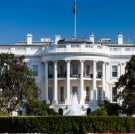Could Trump lose his Wall Street ‘favourite’ as legal woes threaten business empire?

Following the judgement in his civil fraud trial awarding New York state almost half a billion dollars, former president Donald Trump may need to get rid of one of his New York real estate jewels to pay it off.
New York Attorney General Letitia James, whose office brought the suit, told ABC News after the judgement last month that she’s “prepared to make sure the judgment is paid”.
“I look at 40 Wall Street each and every day,” she added.
In 2008, Mr Trump was asked by the Financial Times what was his “most prudent investment”.
“Buying 40 Wall Street – a 1.3m sq ft landmark, and the tallest building in lower Manhattan, for $1m. It’s now worth $600m. It’s one of my favourite deals and one of my favourite buildings,” he told the paper at the time. “I had been watching this building for decades before I made my move in 1995 when the market wasn’t so good. Everyone advised me to turn it into a residential building, but I wanted to keep it as a business address, and it has proven to be a wonderful location for some of the top businesses of the world.”
The paper noted on Tuesday that the deal restored much of Mr Trump’s reputation after the failure of his casinos.
People stand outside of 40 Wall Street, also known as ‘the Trump Building’, on 12 February 2024 in New York City
(AFP via Getty Images)
On Friday, Mr Trump posted a surety bond after the writer E Jean Carroll was awarded $83.3m in damages. As Mr Trump faces the squeeze to pay the civil fraud damages as well, it remains unclear how he will come up with the cash and what assets he may liquidate to do so.
Forty Wall Street, also known as the Trump Building, was the site of protests from the start of Mr Trump’s presidency on 20 January 2017.
Activists gather in front of the Trump Building during the Stand Against Trump rally and march on 20 January 2017 in New York City
(Getty Images)
The 927-foot-tower (283 metres) was built as the headquarters of the Manhattan Company between 1929 and 1930, just as the Great Depression got underway.
Before it became known as the Trump Building, it was also called the Bank of Manhattan Trust Building and the Manhattan Company Building.
The building is now in the midst of the office market crisis following the work-from-home takeover connected to the pandemic.
The building has been owned by the late Filipino dictator Ferdinand Marcos and it was the headquarters of Trump University, for which Mr Trump settled three lawsuits based on the defrauding of its students.
It was the tallest building in the world for a few months in 1930 before being surpassed by 70 Pine Street, according to the FT.
What is now the Trump Building went into foreclosure within 10 years of being built, coming back to life following the Second World War.
The Marcos family took control of the building using funds that US prosecutors say were looted from the Philippine treasury. Ferdinand Marcos was ousted from the building in 1986.
Following legal wranglings over who owned the building, it was bought by developer Burton Resnick in 1989 for $77m.
But renovations failed to attract new tenants and by 1992, The Wall Street Journal wrote that it was “80 per cent vacant, 100 per cent run down, and said to be available for $10m”.
Mr Trump claims to have bought it for just $1m just three years later. Following further renovations, the building rebounded, so much so that Mr Trump could take out a $125m mortgage against it in 1998, telling the Daily News that it was his “best investment”.
After the 9/11 terror attacks, Mr Trump falsely said during a radio interview that “40 Wall Street actually was the second-tallest building in downtown Manhattan … And now it’s the tallest”.
The probe led by Mr James outlined how the Trump Organization’s valuations of the building soon skyrocketed – while mortgage lender Capital One had it at $257m in 2014, the Trumps had it at $550m, according to the FT.
The judge in the civil trial agreed with Ms James’s assessment that the Trump valuation was a scheme to increase his wealth to get better terms on loans and other benefits.
It remains unclear what the building is now worth – it was 98 per cent occupied in 2015 when Mr Trump refinanced the building with a $150m mortgage – last year, occupancy went below 80 per cent, the FT noted.





